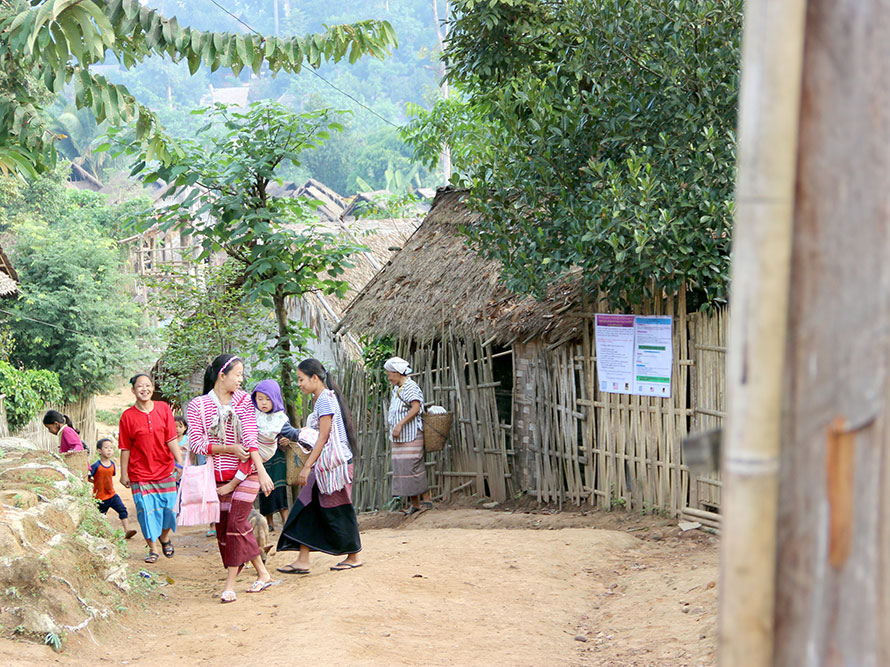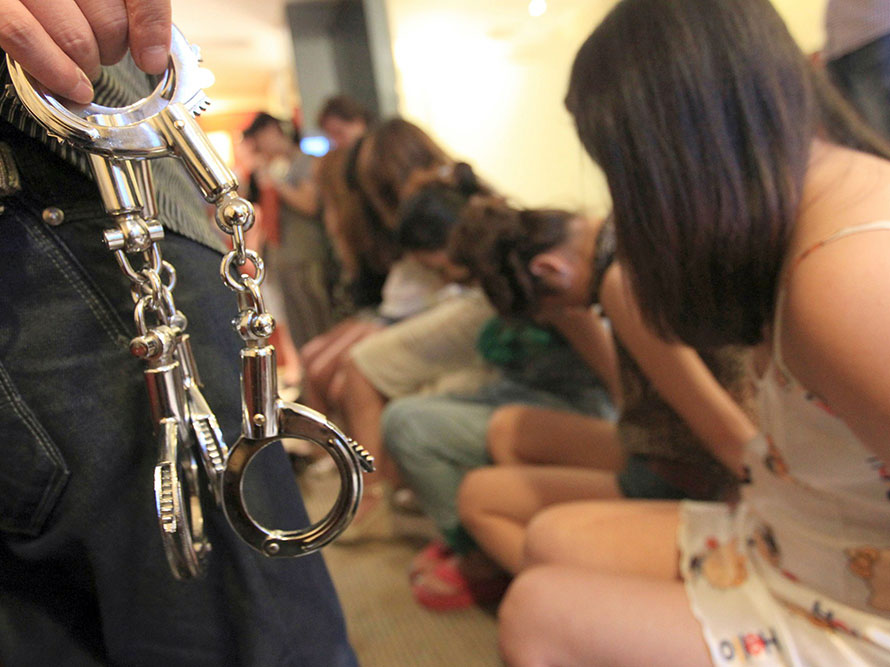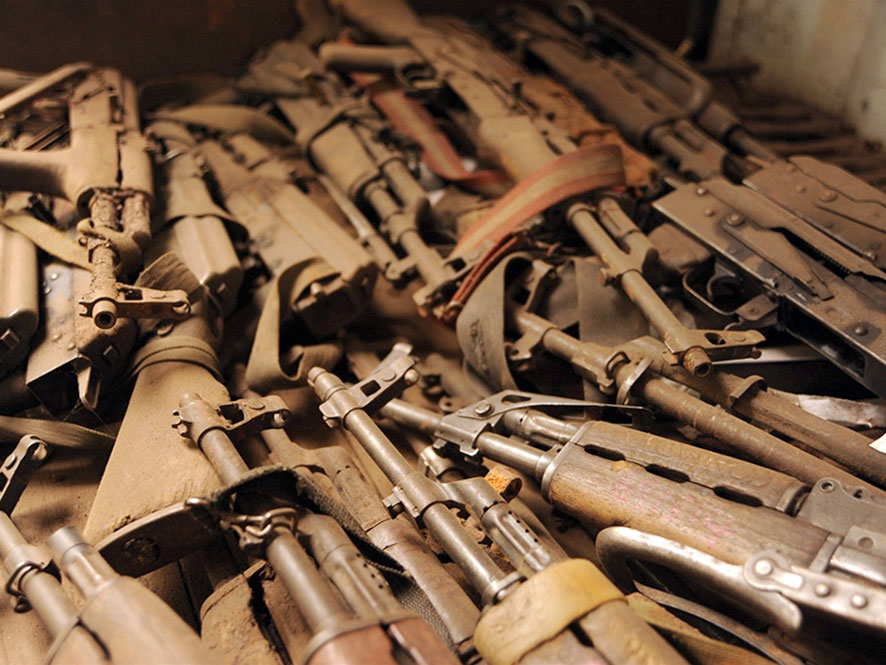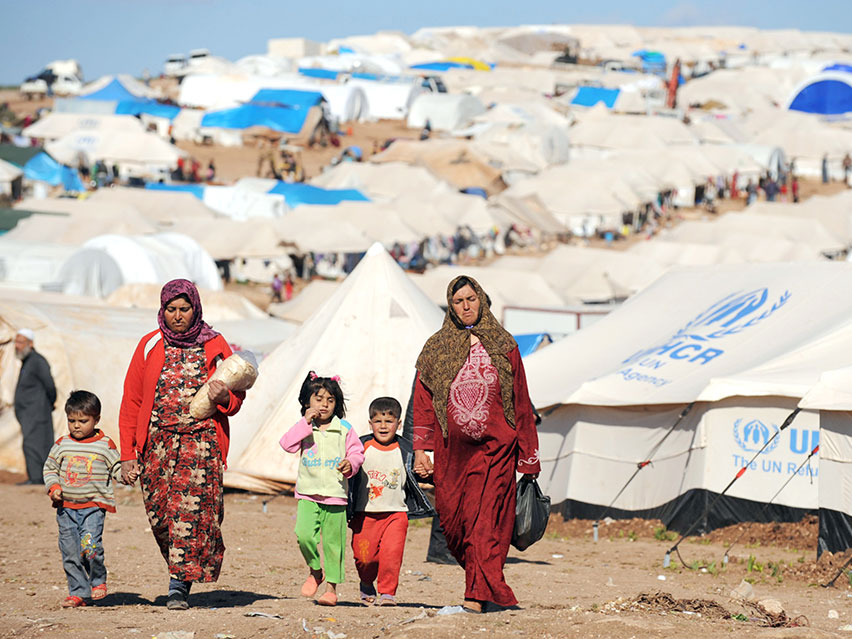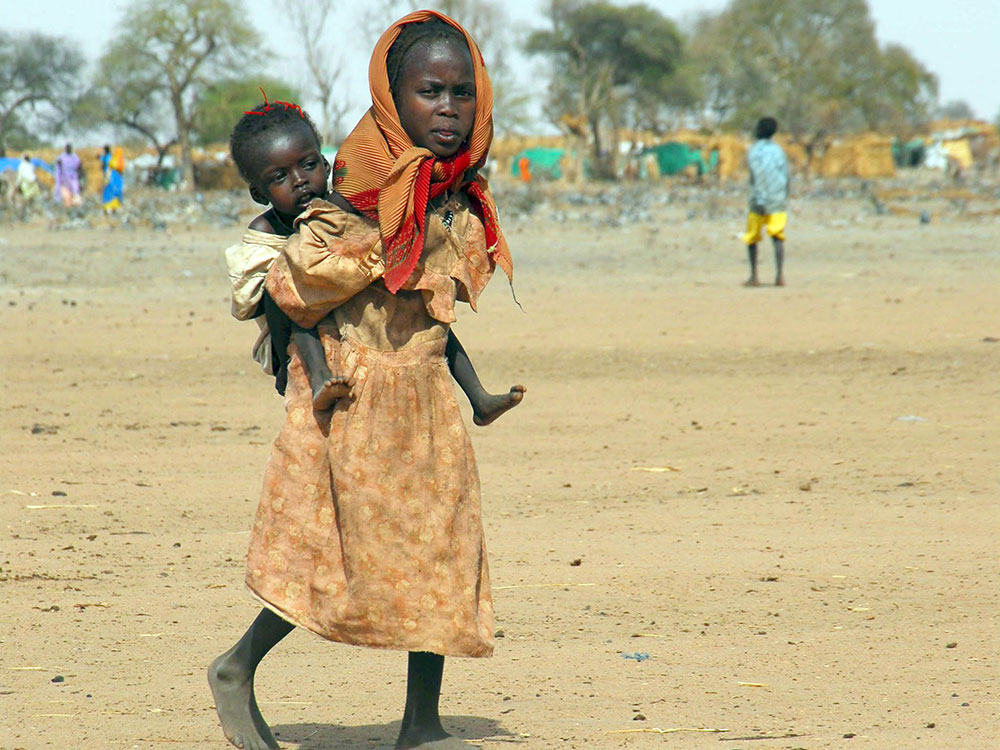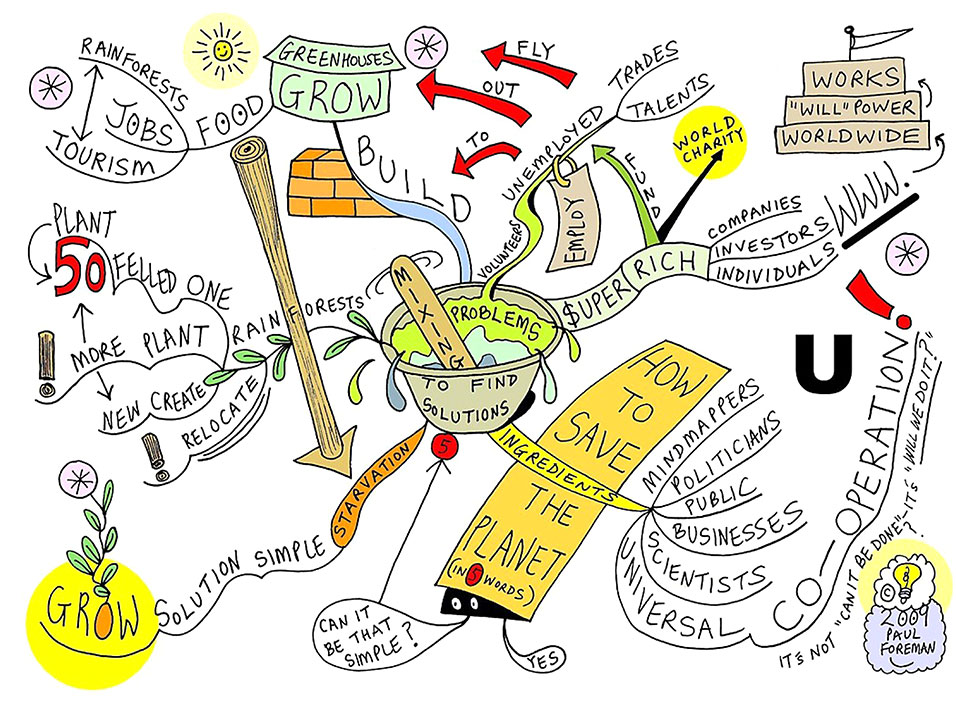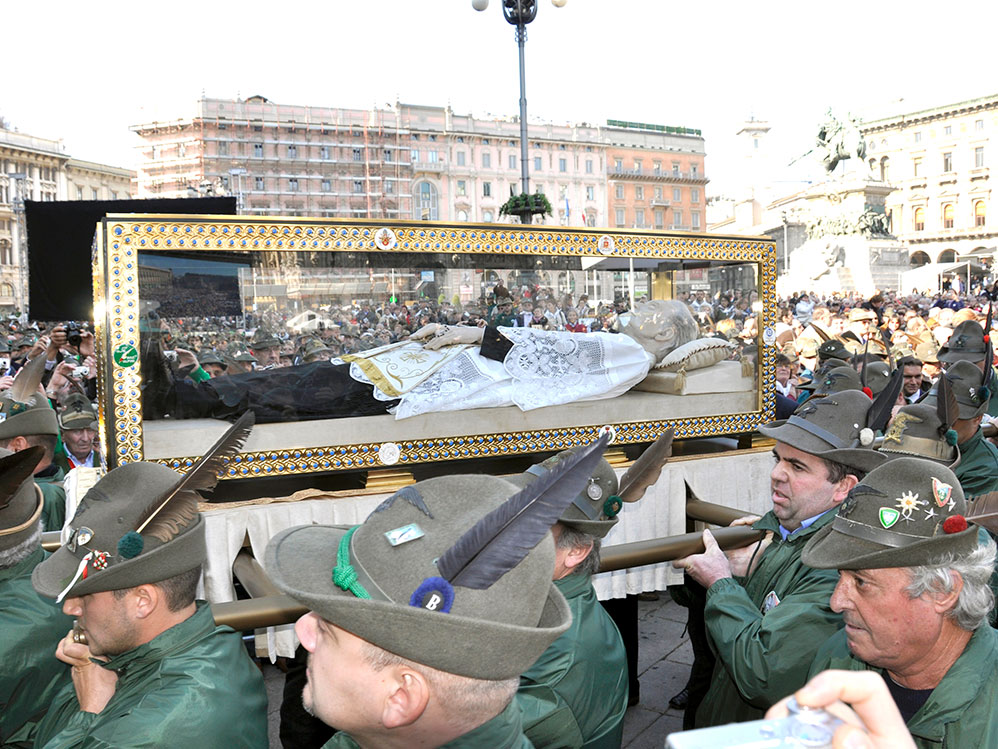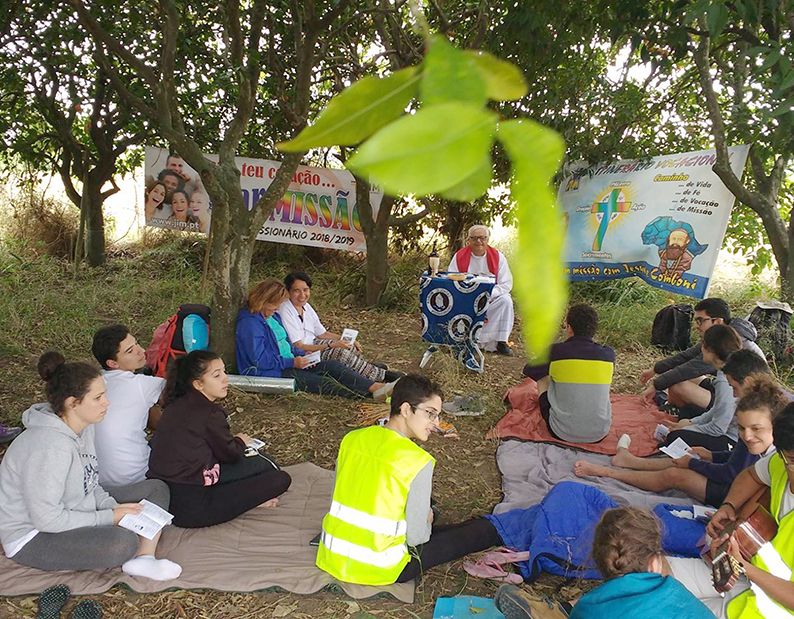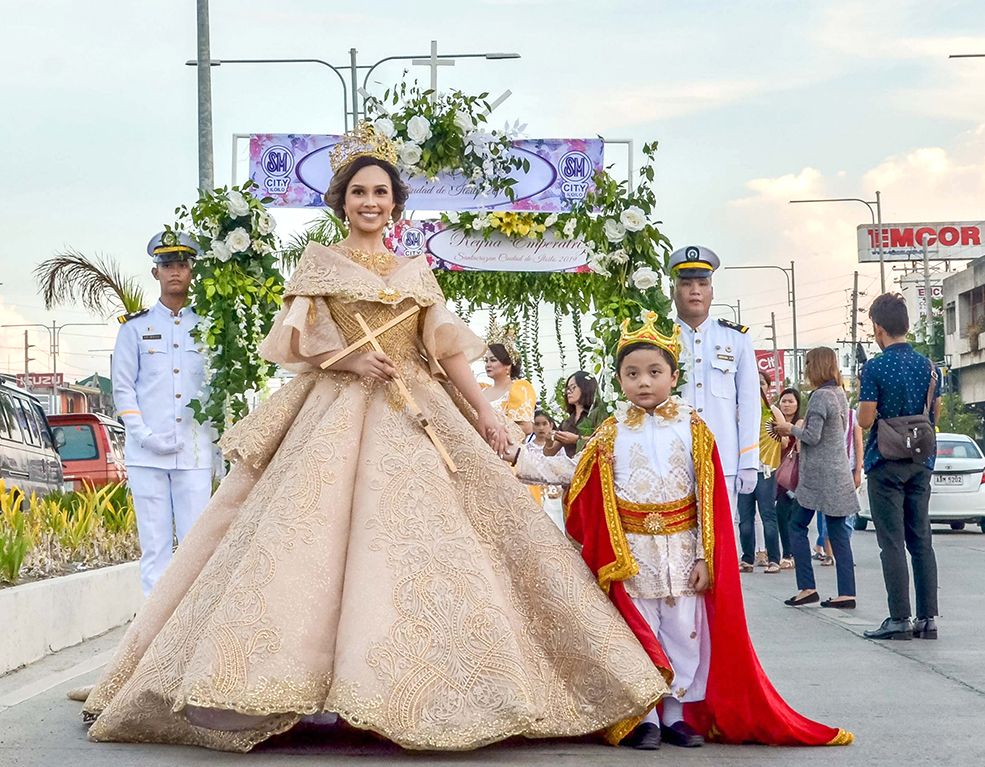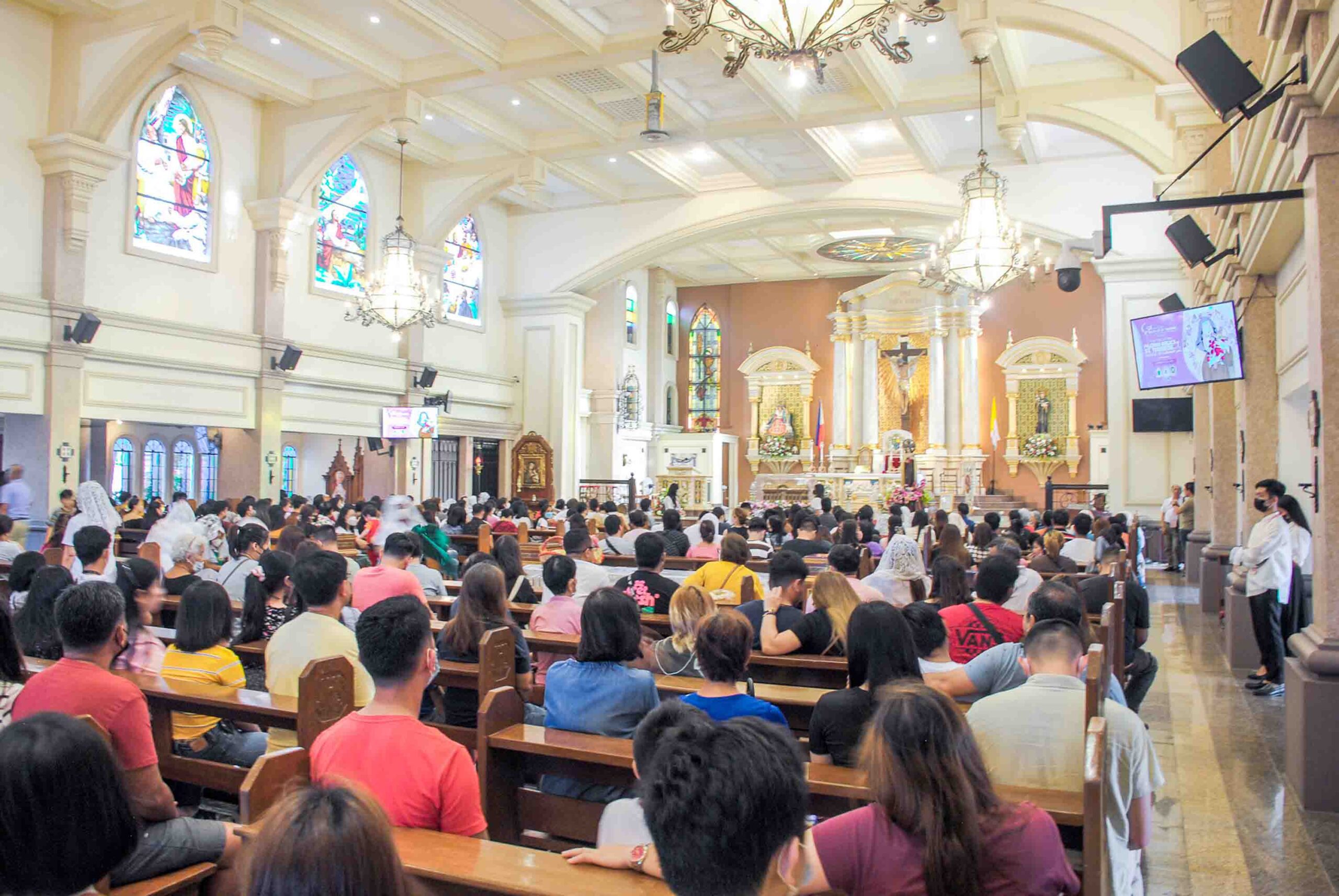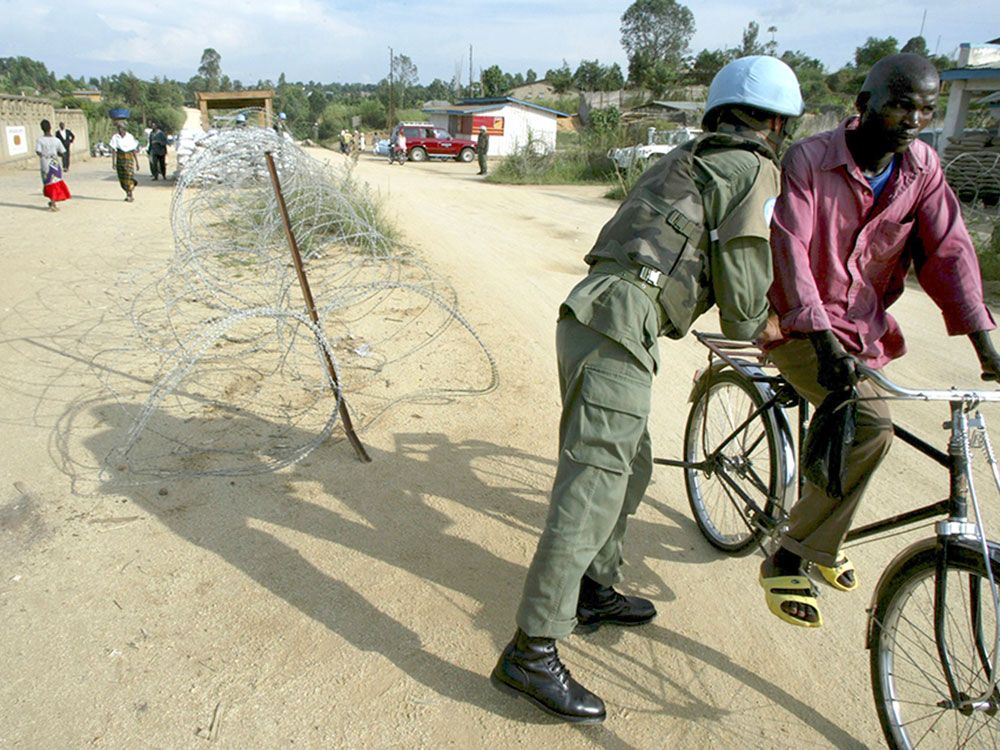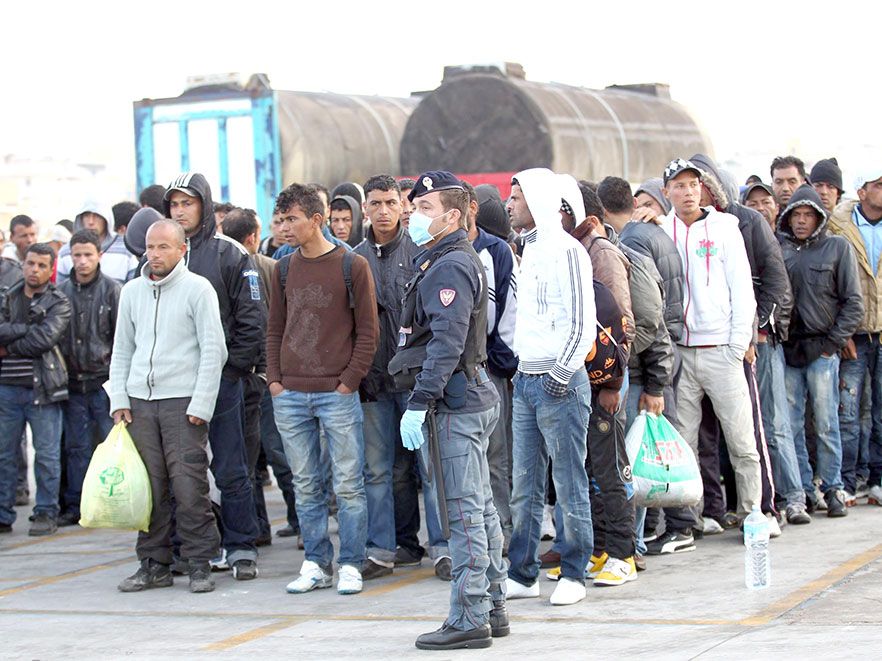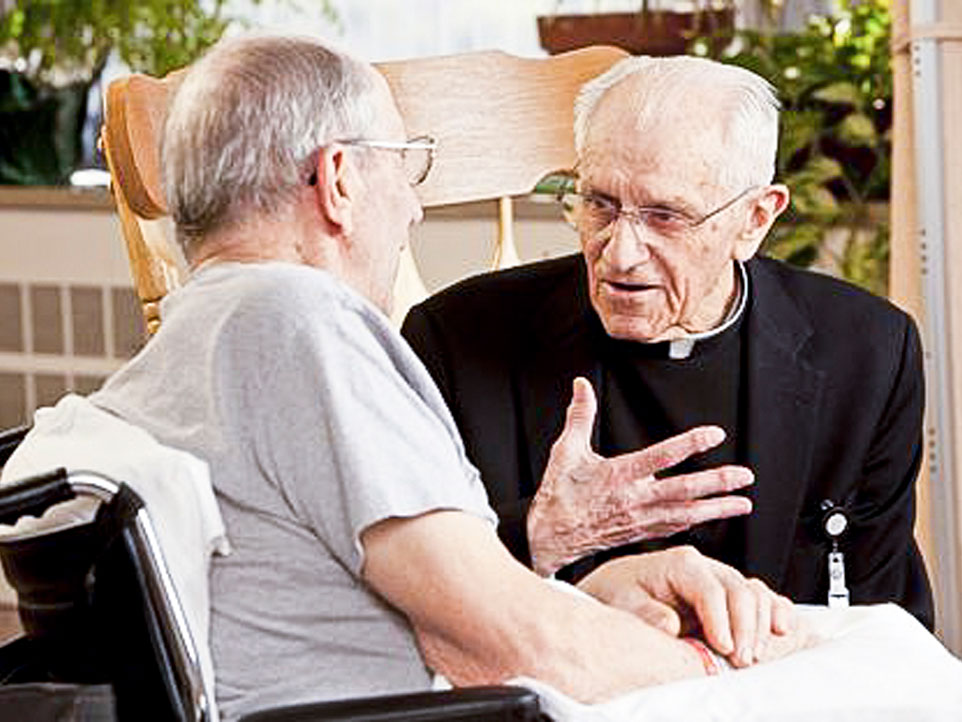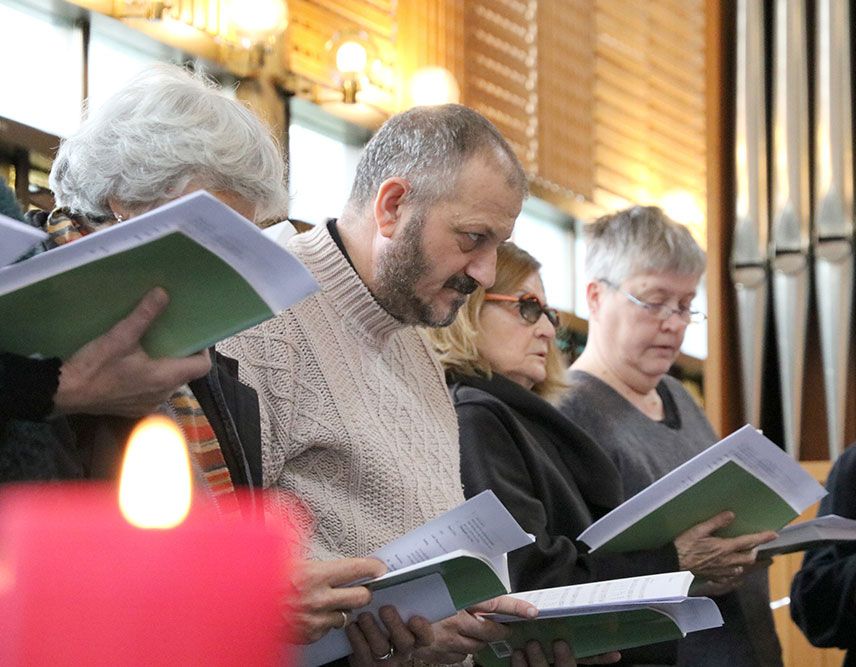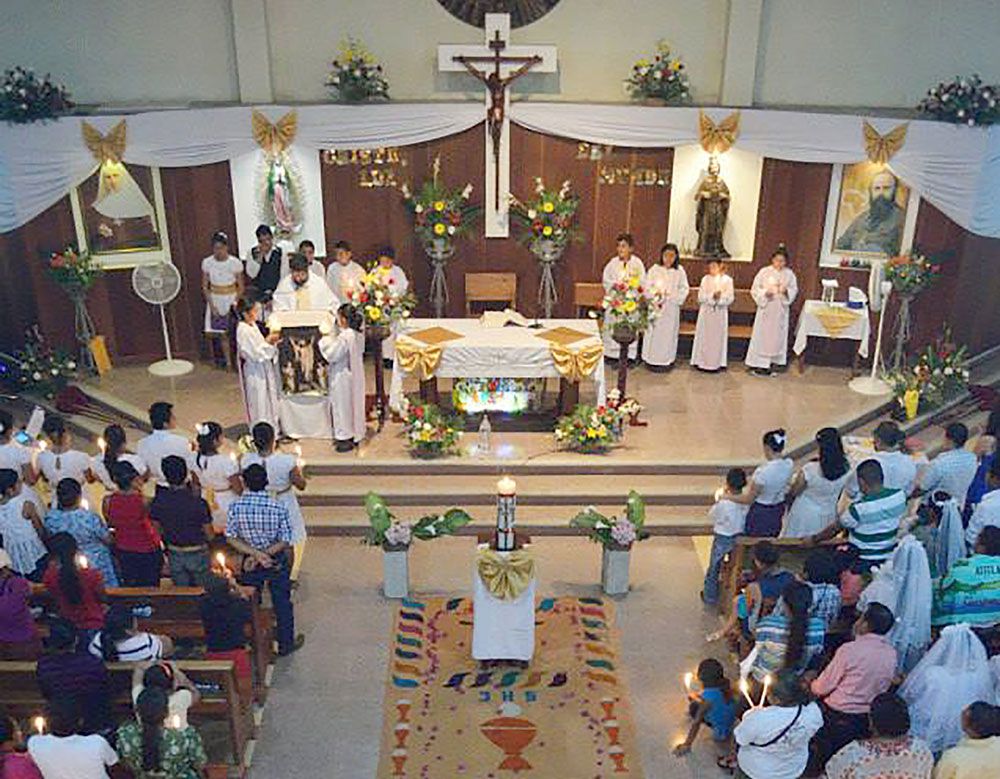The beautiful mountains of Mae Hong Son (MHS) shelter two of the nine refugee camps in Thailand where Burmese nationals from different ethnic groups have settled. Ban Mai Nai Soi Camp (or Camp 1 as it is commonly called) has a population of about 13,000 and is less than an hour’s ride from Mae Hong Son town. Meanwhile, Ban Mae Surin (known as Camp 2) takes three hours to reach and has a population of around 3,400. These camps have been functioning as ‘temporary’ shelters for more than 20 years now.
SERVING HER OWN PEOPLE
The Jesuit Refugee Services (JRS) is one NGO among the more than ten others that has been answering the needs of the refugees in the different camps. Rosalyn, herself a Burmese national from the Karenni State, has been involved in the JRS operations in Camps 1 and 2 for the past four years. She is fully committed to helping her own people. She recalls the journey they made: “In the 1980’s, there were a lot of conflicts in our state between the tribal and the Burmese government. So the people, frightened by the Burmese army, tried to move away and went to live close to the border, hoping the situation would improve. When the situation became very bad, they fled to Thailand. They arrived in 1984 by the thousands. At that time, there was no official support for the people; the NGOs were not yet on the ground. Only in 1997 were the NGOs allowed to enter the camps to work there. However, at that time, there was already some help pouring in from some organizations to help the refugees. In 1996, there was again another massive exodus of people from the Karenni State due to the violence there. The Burmese army burned many villages. Around 100 villages were completely destroyed. Nothing was left and people ran for their lives. Many were also arrested. At that time, I was already working with the local Catholic Church. I went to those villages and I witnessed firsthand the massive destruction of entire villages. Nothing was left, only charcoal! They were completely destroyed. So most of the people from those villages fled into Thailand and ended up here in MHS camps. Most of the people from Shadow township fled to Camp 1 and the people from Mawchi village to Camp 2.”
PASTORAL AND EDUCATION
The people’s needs are many. Therefore, the different NGOs have coordinated with each other to focus their work on specific fields. JRS has been developing the “Pastoral and Accompaniment Program” which aims to strengthen the spirituality of the Catholic refugees through pastoral care and other services. Since all the refugees belong to different ethnic groups (Kayah, Karen, Kayan, Kayaw, and Shan), enhancing their community spirit was necessary. With the support of two priests from Loikaw Diocese in Kayah State, Myanmar, and the Sisters from FI Congregation, the Program not only provides pastoral care, but also addresses some of the most urgent needs of the refugees. One of the two priests, Fr. Mikele Shay Phe, explained the scope of their work: “Our mission here goes beyond the mere sacramental and catechetical assistance. We aim at being a presence of hope and we also support those who are easily forgotten. At the moment, we are assisting by providing food to the elderly and we have built an orphanage for the young students who lost their parents in the conflict or those whose parents are still in Burma.”
Education is, however, the main focus of JRS in the camps. They have partnered with the Karenni Education Department (KnED) in delivering basic education services. The goal is not only to ensure continued education for the numerous young people – many of whom were born in the camp – but, simultaneously, to develop the capacity of Karenni educators for self-sufficiency. Basic education, curriculum development, building of schools, teacher training, school administration and management training, special education, vocational training, non-formal education, and adult literacy, among others, are the focus of the educational program developed by the JRS. As of the academic year 2013-2014, 16 schools in Camps 1 and 2, serving 4,553 students, and giving employment to more than 250 teachers, are in operation.
TRAINING EDUCATORS
Because of the variety of languages spoken in the camps (Kayah, Karen, Burmese and Kayan), the formation of teachers from among the refugees, who can commit to serving their own people in their own language, has been a priority. However, the low stipend provided, the workload, the poor community support, and the desire to move to greener pastures (some apply to be resettled to a third country like the US, Australia or Finland) have created a shortage of skilled teachers in the camps. In addition, students lack the proper mindset and motivation to learn. Many come from the rural areas across the border and have had no education whatsoever. Meanwhile, those born in the camps do not value education because there are no job opportunities in the camps anyway. Officially, refugees are not allowed to seek work outside the camps, except in nearby rural villages where some take on the hard chores of rice planting and harvesting for which they are given a very small wage of 80 to 120 baht per day, compared to 250-300 baht per day paid to Thai workers.
Rosalyn identified three major concerns in their educational program. First, how the students and teachers’ learning will be recognized, validated and accredited upon their return to Myanmar. Second, how to encourage refugees to support themselves, given the limited market opportunities within the camps and restricted movement outside the camps, rather than just relying on dole outs. And, third, how to access higher education skills and levels within the camps which can prepare the refugees for their return to Myanmar.
At present, education-oriented NGOs and CBOs are looking at how students’ learning can be validated and teachers’ qualification accredited. Vocational trainings are being offered as well, based on the market demand analysis done by some NGOs in Myanmar. In addition, a needs-assessment for higher education was conducted by JRS in 2011 and in 2013, while a Community Service Learning Track on the English Language is being offered in coordination with Jesuit Common: Higher Education on the Margins.
ON THE ROAD TO PEACE
After more than 20 years in the camps, the refugees have developed different dreams. Some have applied and have been approved for resettlement in a third country. Others are hoping to be given proper documents to be able to stay in Thailand. (This, however, is still a remote possibility, with the Thai police keeping close watch around the camps and along the main roads for illegal immigrants.) Still, others, who have fled their homes, dream of one day returning to their villages or to what is left of them.
A combination of hope and fear reigns in the hearts of those who long to go back. John Buereh is one of them. He was accused of supporting the Karenni army and was imprisoned in 2005. Subjected to torture to force a confession, he stayed in prison until 2008. The following year, he made it to Camp 1. Now, he is the chairman of the Catholic Action in the Camp and the deputy director for the Karenni Education Department (KnED). (Last November, he was appointed Director of KnED after the former director resettled in Australia.) “Life in the camp is safe even if we are poor. Many of us want to go back but we fear the intentions of the government. They say we can go back; that we have peace, but we know the government is increasing its troops. So we are afraid,” he said.
In Myanmar, some steps have been taken towards the path of peace. Among them are the first general election on November 7, 2010 and the release from house arrest of pro-democracy leader Aung San Suu Kyi on November 13 of the same year. Later, in October 2011, 200 political prisoners were released. In December 2011, the Myanmar President signed the assembly law and allowed the U.N. access to Kachin State to provide humanitarian relief. More recently, in January 2012, a ceasefire agreement was reached with KNU. As a result, many prisoners were released and 651 detainees were granted amnesty. Meanwhile, the IMF declared Myanmar as the next economic frontier in Asia.
However, a series of sectarian violence between Muslims and Buddhists in 2012 and 2013 destroyed thousands of homes, killed hundreds of people, and displaced thousands of people. Despite these clashes, most of Myanmar’s ethnic groups sat down with the national government on November 4, 2013 to reach a countrywide ceasefire deal. Recently, the Burmese government announced a tentative plan to have a nationwide ceasefire agreement with all armed groups, followed by an all-inclusive political dialogue as early as mid-2014. However, despite the steps that have been taken towards peace, nothing concrete has been discussed about the fate of the refugees who wish to return to their country. Because of the skepticism and fear about the real intentions behind the peace deal, the reality of returning home remains an elusive dream for the refugees.
REPATRIATION
Even as talks are underway for possible repatriation, there are still people coming into the camps. Some say they are seeking an opportunity to have an education in a safer place; others want to avail of the help provided by the different NGOs in the camps, such as health, food, and legal assistance to be able to resettle in a third country. “The idea of repatriation is still there, especially now that some improvements in the peace process have been achieved. There are some works being done, such as the UNHCR Voluntary Repatriation Framework; quarterly stakeholders’ meeting wherein UNHCR, CCSDPT, CBOs, and refugee committees discuss durable solutions; plan to set up information centers in the camps where all refugees can access correct information; and UNHCR’s cross border meetings. All NGOs working in the camps here are trying to prepare refugees by providing correct information about the situation now in Myanmar so that they may make the correct decision. We cannot force them to leave or to go back; repatriation must be voluntary. We provide information and skills to equip them for such a move,” Rosalyn said.
With the assistance of the U.N.H.C.R., a profile exercise was undertaken to find out if refugees want to return to their country, be resettled to another country, or be integrated in Thailand. The results from the pilot study in one camp revealed that the majority do not want to go back, mostly the young refugees who were born in the camp. The reason cited was that they do not know how life will be back in Myanmar. All they know about their country are the stories of war and destruction. While not wanting to return, they also do not want to stay in the camp because of the helpless situation there. They want to explore what is outside. If possible, they want to resettle. What is important to them is to get out of the camp and discover what is outside. Some already venture beyond the camp to find work. “The Thai authorities in charge of the camp are quite considerate and understand the desires of these young people. So, unofficially, they may allow them to go out to the nearby village to search for work and make a living. They are not allowed to venture farther than the nearby village of Nai Soi. However, some of them venture even farther into the cabbage and corn fields. They stay there for a few days and, then, come back to the camp. The NGO in charge of the ration of food updates its records. Those who are not in the camp are removed from their list and will not receive food,” according to Rosalyn.
GOING BACK HOME
Despite all this, Rosalyn remains optimistic: “I think there will come a time when people will realize it is time to move on. The peace process is ongoing in Myanmar. There have been some improvements in our country and it might be an encouragement for some to go back. But it will really depend on how the government will deal with the ethnic groups. Naturally, the Thai government wants the refugees to go back. However, they have also stated that this process must not be rushed and should be in accordance with international principles. Integration into Thailand is currently not an option to the refugee population. This could, therefore, prompt the refugees into becoming illegal immigrants here in Thailand. We have to look into this new situation that may drastically increase in the near future.”
Certainly, without genuine reconciliation, it will not be possible to address all of the problems that decades of conflict have created in Myanmar. Thousands of villages have been relocated or destroyed, hundreds of thousands of landmines have been deployed, basic infrastructure is non-existent in many areas, and local economies have been ruined. A comprehensive rehabilitation program will need to be drawn up which will include provision for hundreds of thousands of internally displaced persons (IDPs) who may also wish to return ‘home.’
No doubt, the 140,000 refugees in camps in Thailand, the tens of thousands outside the camps, and the hundreds of thousands of IDPs across the border have an important role to play in the process of reconciliation and healing of the wounds left by ferocious violence. The transition from refugees or displaced persons to free citizens requires skills in community management and service delivery, and assistance programs that will make the return and reconstruction a reality.
After more than twenty years, the question lingers – until when will the people in the camps remain refugees? The realization of repatriation obviously takes more than words. People want to see that the government is not only willing to welcome them back, but also to support them in rebuilding their lives. The irony remains: Though the refugees are close to their own country – in fact, only a few kilometers from the border – they have still a long way to go before they can finally make it home.

